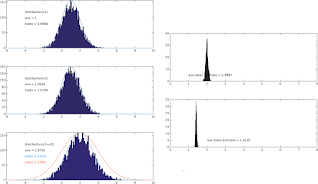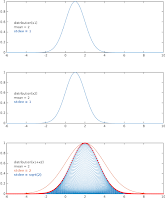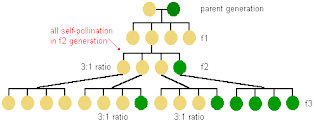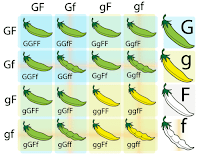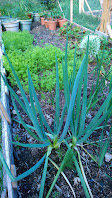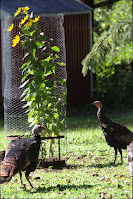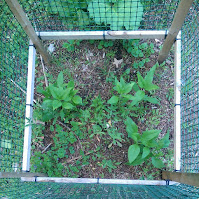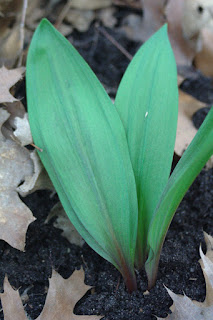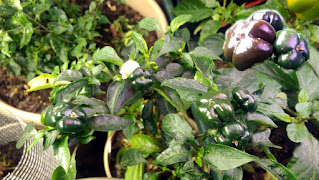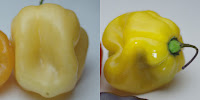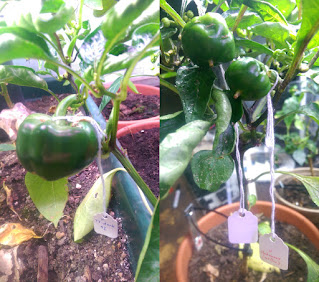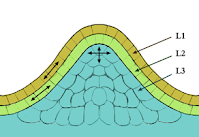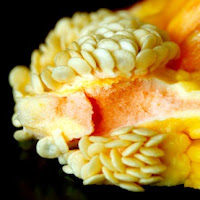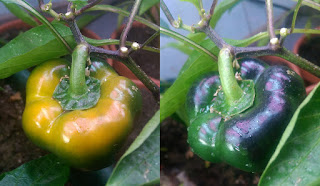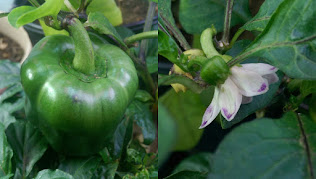 |
| Fig1. Adapted from Grossen et al. and photos by @Blackmudpuppy. |
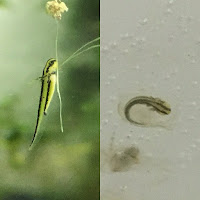 |
| Fig 2. Triturus babies. Photos by @Blackmudpuppy |
The problem with this idea is that the newts lay their eggs individually, folding a bit of underwater leaf over them for protection from predators. Any given hatchling wouldn't be expected to find a separately stashed egg, so the dead eggs would probably be consumed by other organisms. If the eggs were laid in small clusters, the story might be different, but for now we have to abandon this hypothesis.
 |
| Fig 3. Hypothetical lethal male. |
 |
| Fig 4. Balanced lethal chr1 in Triturus. |
The difficulty arises when we consider how this arrangement could come to be. If either recessive lethal allele was present without the other, then it would be selected out of the population. The chromosome version without a lethal allele would quickly dominate in the population (and we wouldn't see a 50% death rate among the babies).
The Grossen et al. paper goes into some really cool details about how sex-determination works in these newts. They have an XY sex-chromosome system kind of like ours, but they're also strongly impacted by temperature. If baby newts are raised up in water that's too warm, they'll become functionally male. If they're raised up in water that's too cold, they'll become functionally female. If the temperatures are extreme enough, they'll all grow into one sex without respect to what their sex-chromosomes look like. (This happens with lots of cold-blooded creatures, though what sex is produced at what temperature varies by species.)
In this context, they propose that the 1a/1b chromosomes that are causing so much trouble started out as two versions of an ancestral Y-chromosome. Y-chromosomes tend to collect recessive lethal mutations (deletions and such) and different lineages of Y-chromosome will end up with different mutations. If a population of ancestral Triturus newts experienced a significant cold spell, some of the chromosomally male newts would have grown up female. They could then breed with more typical males to produce offspring with two Y-chromosomes. If the two Y-chromosomes have the same mutations, the offspring would die. But if they had sufficiently different versions, they could survive. (This has been shown experimentally in a few species, as described in Haskins et al. 1970.) Grossen et al. go into some detail simulating how this initial case could lead to the chromosome dynamics now seen.
 |
| Fig 5. Model for evolution of balanced lethal Ys. |
- The population beings with XY males and XX females. Multiple Y lineages coexist.
- As the temperature drops, the offspring of all XY*XX crosses develop as female. Sooner or later a XY female of the newer generation meets up with an XY male from the previous generation. If the Y-chromosome versions are the same, every baby again develops as female because the double-Y babies die. If the Y-chromosome versions are different, a fourth of the babies will develop as YaYb males.
- The older males eventually die off, leaving only YaYb males. There are still XX females around from the last generation, but all of their offspring will now be XYa or XYb.
- The XX females eventually die off, leaving only XYa and XYb females.
- The temperature drops a bit further. Now YaYb embryos can develop as either male or female.
- Some YaYb females meet up with some YaYb males and the first clutch of eggs is laid that experiences a 50% chromosomal-induced fatality rate.
- The newt population has been experiencing a major catastrophe and has dropped to very small numbers. The X chromosome carrying females die out, due to either random chance or some minor benefit the YaYb females have.
 |
| Fig 6. Model for evolution of new sex chromosomes. |
- The temperature starts to rise back up and new 1a1b babies start developing as males. Some very few of the females happen to have a mutation on another chromosome (2*) that encourages female development. The offspring carrying this mutation develop female at these warmer temperatures.
- All the older females die off, leaving only those carrying the mutation. The temperatures are still rising and some newts carrying the mutation start developing male.
- Some males with the mutation meet up with females also carrying the mutation. The first newts with two copies of the mutation are born and develop female.
- The temperatures are still rising. Newts born with only one copy of the mutation start developing male. The only newts that develop female have two copies of the mutation.
- The older females die off, leaving only those with two copies of the mutation. The only new males are those born with one copy of the mutation. The older males die off, leaving only those with one copy of the mutation.
I could extend my model using a simulation-based approach similar to Grossen et al. to make a better comparison, but I don't expect I will. With complex evolutionary history like this, it might never be possible to ascertain exactly how the process unfolded. There could be many equally-probably historical scenarios that would have led to the evolution of the situation we see today. It's educational to study how these systems could potentially have evolved, even if we can't sort out the exact path they took to get where they now are.
I don't often write about published papers, but when I do I prefer to carry the discussion past where the paper ended. Discussing an alternate model is in no way an attack against the one proposed in Grossen et al.. It's an honest reflection of what I was thinking of while reading and is part of an exploration of the ideas discussed in the paper. Frankly, if their writing didn't give me any new ideas to play with, I wouldn't find it anywhere near as interesting to read. Good science answers a question. Great science answers a question and then draws you in to ask your own new questions.
This post was inspired by an interesting conversation over on Twitter. (You can follow me there as @thebiologistisn.)
The photos of the Triturus newts were loaned to me for this blog post by photographer (and newt wrangler) @Blackmudpuppy.Apparently Triturus newts, i.e. crested newts, share the synapomorphy of having a homozygous lethal allele, so 50% of all fertile eggs die 😱— Mark D. Scherz (@MarkScherz) October 5, 2017
References:
- www.mnn.com/earth-matters/animals/blogs/what-difference-between-salamander-and-newt
- Wikipedia:
- en.wikipedia.org/wiki/Kin_selection
- en.wikipedia.org/wiki/Punnett_square
- en.wikipedia.org/wiki/Ice_age
- Primary literature:
- 2012 Grossen et al.: www.jstor.org/stable/
10.1086/668076 - 2011 Wielstra & Arntzen: bmcevolbiol.biomedcentral.com/articles/10.1186/1471-2148-11-162
- 2007 Arntzen et al.: www.repository.naturalis.nl/document/94261
- 2007 Steinfartz et al.: onlinelibrary.wiley.com/doi/10.1002/jez.b.21119/pdf
- 1970 Haskins et al.: www.nature.com/hdy/journal/v25/n4/pdf/hdy197064a.pdf
- Twitter discussion: https://twitter.com/MarkScherz/status/915850720204738560
![Figure illustrating how arithmetic operations are performed on intervals. A=[-1,3], B=[1,5]. Top subfigure shows A+B=[0,8]. Bottom subfigure shows A-B=[-6,2].](https://3.bp.blogspot.com/-MmscbJGCbrM/WZEJTwJ3LII/AAAAAAAAFcQ/HE2p-A9NebwuydCTqlo7GmxwGFtAgwdQACLcBGAs/w200-h156/addition_subtraction.png)
